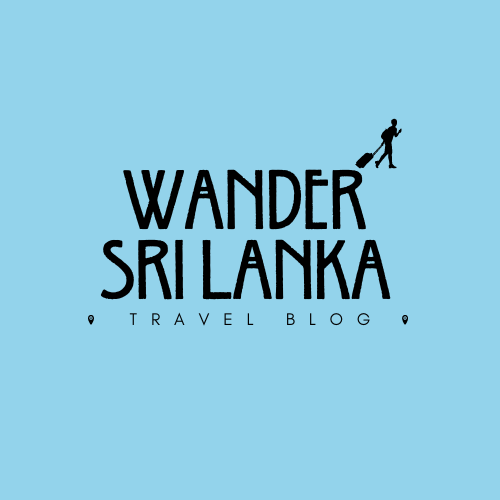Sri Lanka is home to many well-known wildlife sanctuaries, but few are as peaceful and untouched as Gal Oya National Park. Nestled in the island’s eastern region, this stunning park offers a rare blend of rich wildlife, scenic landscapes, and deep cultural heritage.
Here, travelers can explore nature at its purest, away from the crowds, through unique boat safaris, elephant sightings, and encounters with the island’s indigenous Vedda community.
The History and Significance of Gal Oya
Gal Oya National Park was established in 1954, making it one of the oldest national parks in Sri Lanka. It was created to protect the catchment area of Senanayake Samudraya, the country’s largest man-made lake, built as part of the Gal Oya irrigation project.
The lake’s creation turned the surrounding region into a thriving habitat for wildlife, and today it remains one of the most biologically diverse areas in the country.
Unlike other national parks such as Yala or Udawalawe, Gal Oya has stayed off the main tourist trail, allowing visitors to experience true wilderness and tranquility.
Wildlife Encounters – The Swimming Elephants of Gal Oya
Gal Oya is one of the few places in the world where you can see elephants swimming between small islands across the lake, an extraordinary sight that captures the essence of wild freedom.
Elephants in Their Element
The park is home to a healthy population of Sri Lankan elephants. These gentle giants are often seen bathing, grazing near the water’s edge, or crossing the lake in herds during boat safaris. Watching them swim gracefully through the calm waters is one of the most unforgettable experiences in Sri Lanka.
Other Wildlife
Beyond elephants, the park shelters an incredible variety of animals, leopards, sloth bears, water buffalo, spotted deer, and wild boar. You might also spot langurs and toque macaques swinging through the treetops.
Birdwatching Paradise
Bird enthusiasts will find Gal Oya a paradise, with over 150 species of birds, including rare and endemic ones such as the Ceylon junglefowl, grey-headed fish eagle, and Malabar pied hornbill. The mixture of forests and wetlands makes the park a perfect nesting ground.
Boat Safaris – A Peaceful Way to Explore
What makes Gal Oya different from every other park in Sri Lanka is its boat safari experience, a calm and scenic journey across Senanayake Samudraya Lake.
A Safari on the Water
Instead of driving through dusty tracks, you’ll glide across serene waters surrounded by green hills and small forested islands. With each turn, you’ll encounter wildlife, elephants swimming, crocodiles sunbathing on the banks, or flocks of cormorants flying in formation.
The best times for boat safaris are early morning or late afternoon, when the light is soft and the animals are most active.
A Photographer’s Dream
For nature photographers, Gal Oya’s lake offers breathtaking compositions, mirror-like reflections of the forest, elephants wading through water, and fiery sunsets over the hills. Every frame tells a peaceful story of life in the wild.
Staying Near the Park – A True Wilderness Experience
Accommodations near Gal Oya emphasize sustainability, comfort, and close connection with nature. One of the most remarkable options for eco-travelers is Wild Glamping Gal Oya, a luxurious yet nature-centered retreat nestled among the park’s rolling hills.
Here, guests stay in spacious tents that blend modern comfort with rustic charm. The property organizes guided safaris, nature walks, and cultural visits, allowing travelers to experience both adventure and tranquility.
Evenings at the camp are magical, with bonfires under starlit skies, locally inspired cuisine, and the soothing sounds of the forest surrounding you. It’s not just a stay; it’s a journey into the heart of nature.
Meeting the Vedda Community – Guardians of the Forest
One of Gal Oya’s most unique cultural experiences is the chance to meet the Vedda people, Sri Lanka’s indigenous forest community.
Ancient Wisdom and Traditions
The Vedda have lived in harmony with nature for centuries, using traditional methods for hunting, herbal medicine, and food gathering. Visiting their villages gives travelers insight into a way of life that respects and preserves the forest.
Cultural Exchange
Guided tours often include storytelling sessions, demonstrations of ancient tools, and shared meals. These interactions are conducted respectfully, helping preserve and honor the Vedda culture while offering visitors a deep connection to Sri Lanka’s living heritage.
Exploring Beyond the Park
Apart from boat safaris and cultural visits, Gal Oya’s surroundings are perfect for eco-tourism adventures.
- Jungle Treks: Short hikes reveal waterfalls, medicinal plants, and breathtaking views.
- Birdwatching: Early mornings bring life to the forest canopy with colorful flocks of birds.
- Hilltop Views: The Monkey Mountain hike offers panoramic vistas of the lake and its islands.
Every activity here is guided by naturalists who share fascinating knowledge about local ecosystems.
Best Time to Visit Gal Oya
The best months to visit are March to September, when the weather is dry and wildlife is easily spotted near the water. From October to February, occasional rains turn the landscape lush and green, creating stunning photo opportunities.
The park remains open year-round, and its uncrowded nature ensures a peaceful experience in every season.
The Untouched Soul of Sri Lanka
This National Park is more than just a safari destination, it’s a living example of how nature and culture coexist. From swimming elephants and mist-covered islands to the traditions of the Vedda people, every moment here feels raw, authentic, and deeply human.
For those who seek peace over crowds and authenticity over luxury, Gal Oya is the perfect escape. And with comfortable eco-stays like here, travelers can enjoy adventure and relaxation in one of Sri Lanka’s most beautiful corners.
Here, the wild flows freely, reminding you that the greatest journeys are often the quietest ones.
